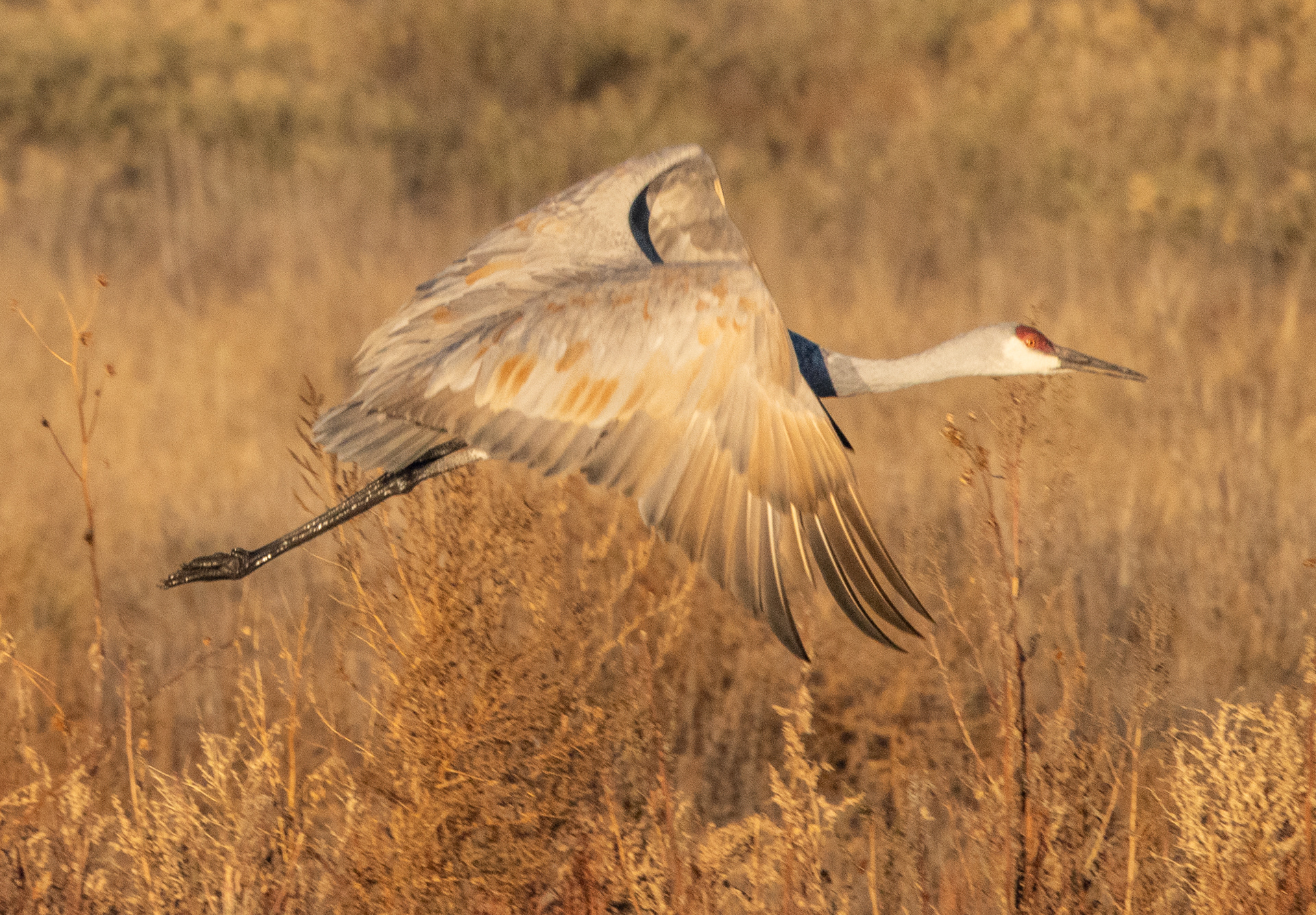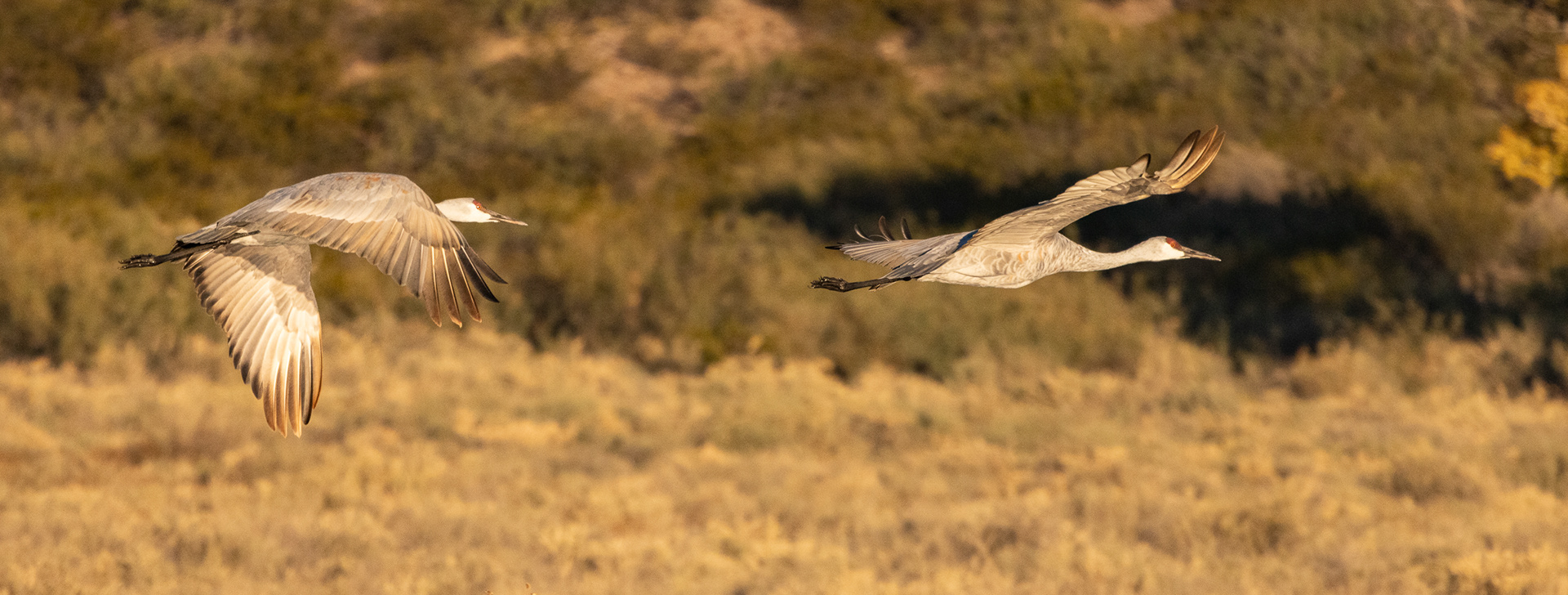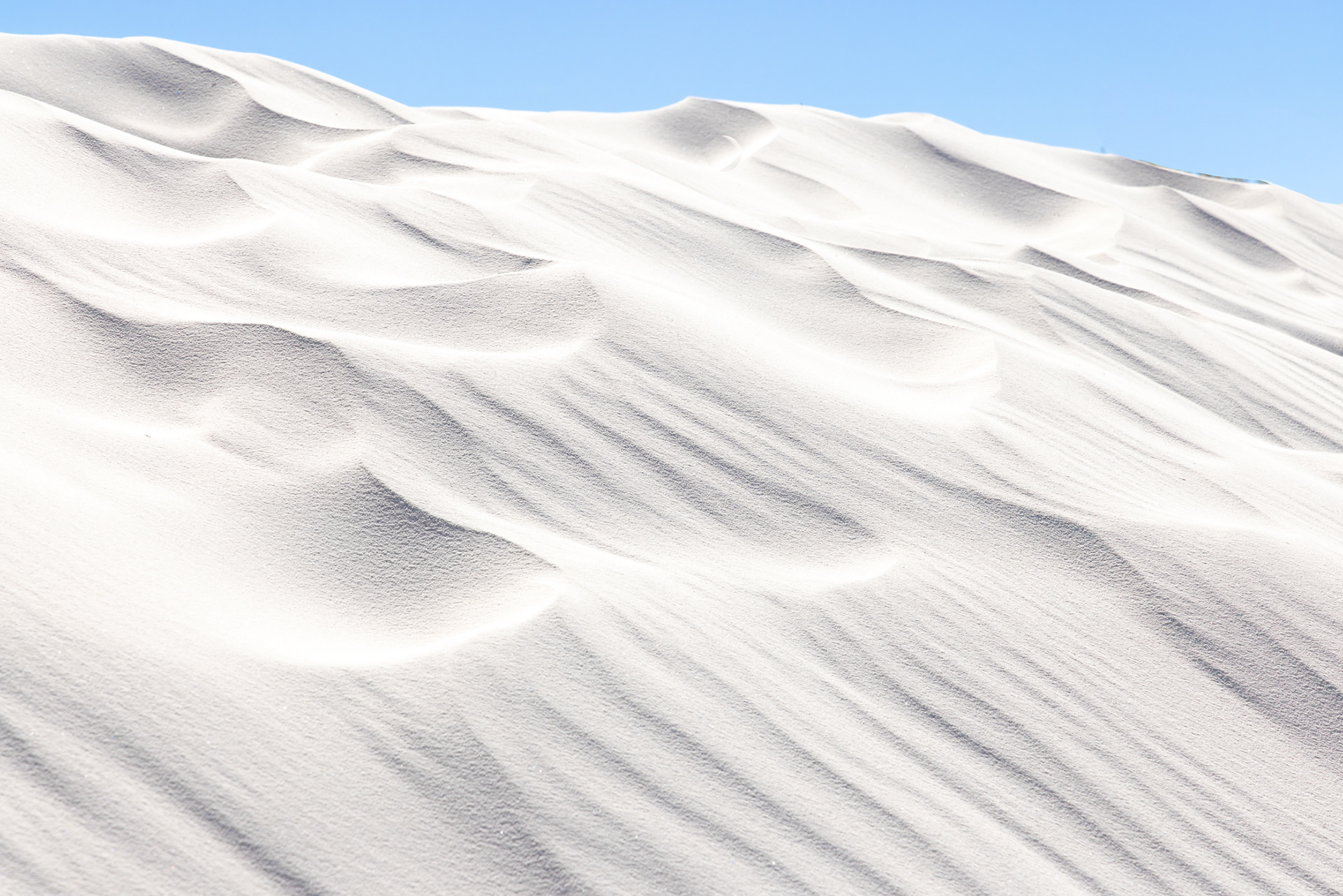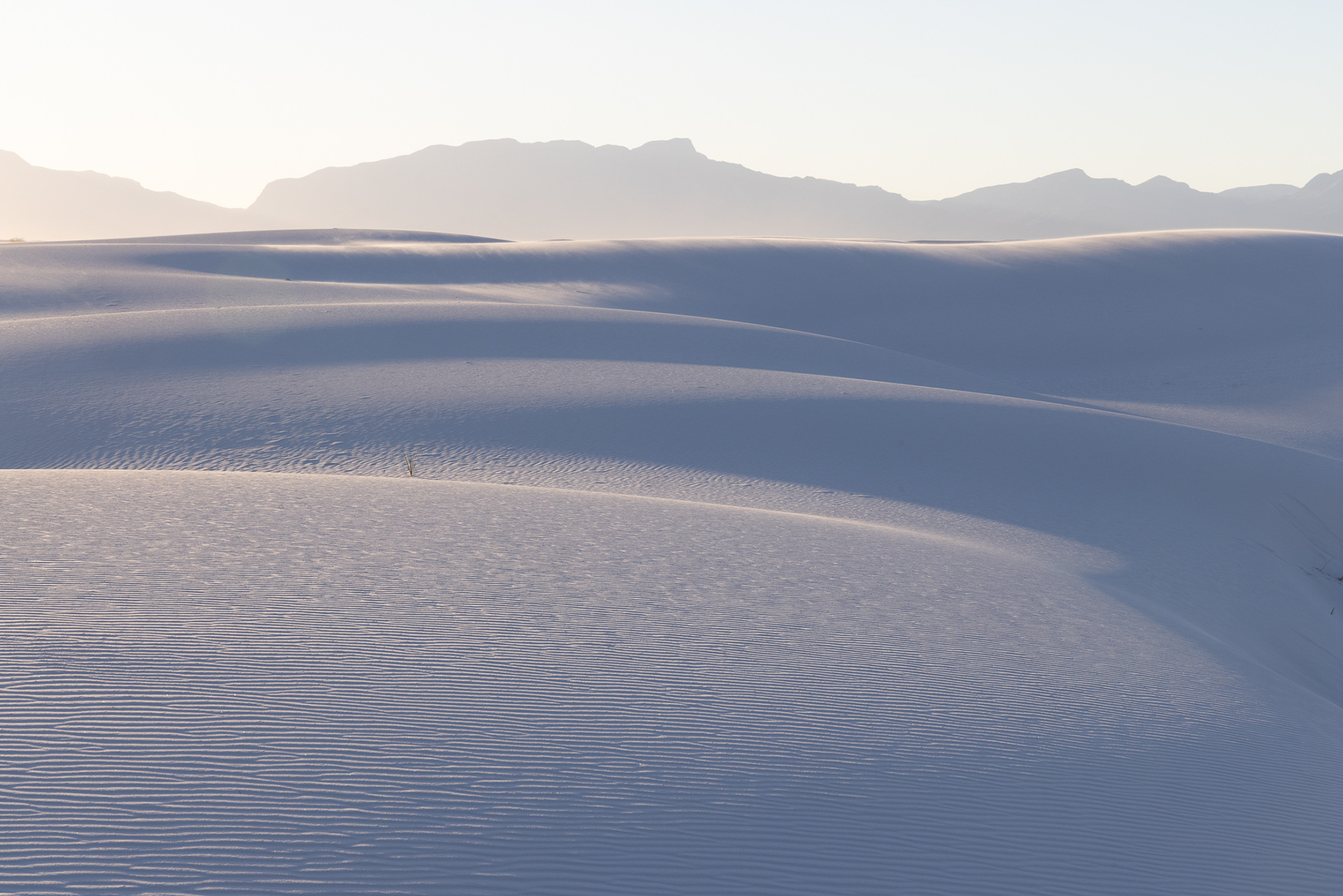In early November, a winter storm moved across the northern US, driving many migrating species south earlier than normal. In Colorado and New Mexico, however, our warm fall continued late into the month. Most photographers travel to Bosque del Apache National Wildlife Refuge in central New Mexico in December and January when thousands of birds winter along the Rio Grande. Of course, these photographers also freeze as they line up tripod to tripod to photograph the birds rising off the water each morning at dawn.
Through the bird app, e-Bird, I noticed hundreds of sandhill cranes (not the thousands of later winter months) had already arrived at the refuge in early November. I will take hundreds of birds without hundreds of photographers in warmer temperatures anytime. So, Nancy and I journeyed south to see what we could see and photograph.
It all worked out just right. Lots of birds, warm weather, spicy food and very few other folks competing for good photo sites. Sandhill cranes are the stars of this show, but thousands of ducks, snow geese and other species were also present. We even found a family of javalinas to photograph.










What a wonderful racket they make. Nature at its best!


Very Large Array (yes, scientists have a sense of humor -- what else would you call it?)



West of Bosque del Apache NWR about 50 miles is the Very Large Array. This radio telescope installation (27 dishes that can be configured into a single telescope 15 miles across) is a wonder to behold. We were fortunate to be there when all the dishes are in the D formation which is when they are closest together. Google Very Large Array for more information on this site.
White Sands National Park
From the wildlife refuge it is a 2-hour drive south to White Sands National Park. For years, I have viewed spectacular photographs from this unique 274 square- mile formation of gypsum dunes. Walking and driving on what looks like snow in 70 degree temperatures is a challenge to our senses. I could have spent many more days there as the photographic compositions appear endless.







